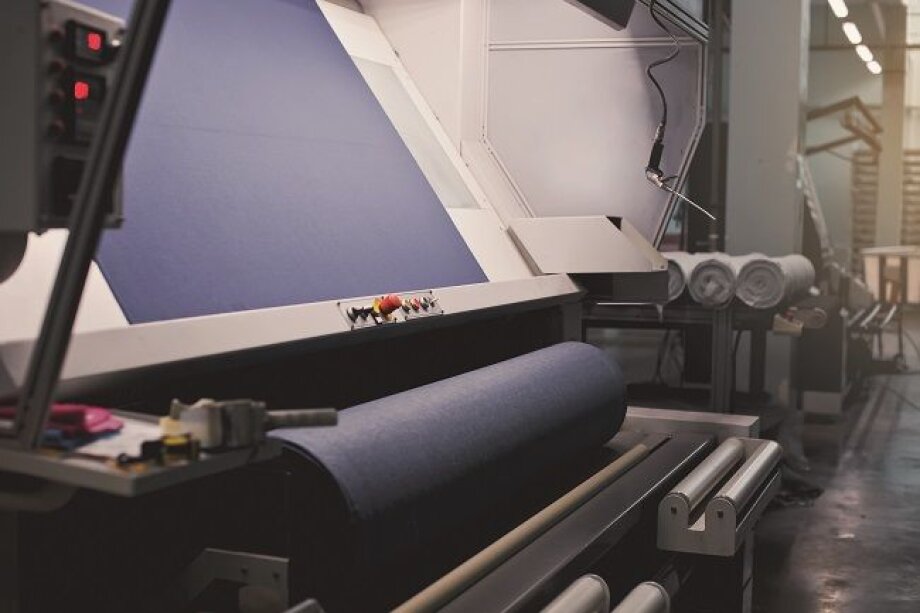With fast fashion flourishing in the 21st century, the clothing industry has grown tremendously. In the past 15 years the production volume of clothing units has doubled worldwide, according to the UK’s Environmental Audit Committee. In the UK alone, the average consumption of new clothes reached 26.7 kg per person in 2017 (the highest in Europe). Low prices and mass-production has pushed people to buy clothes in constant pursuit of what’s new and trendy.

The true cost of fashion
Clothes affordability comes at a high cost for people and planet. Fashion reinvention puts garment workers at risk, especially in poor countries. Unhealthy working conditions, extremely low wages and lack of security are some of the issues shown in the True Cost documentary (2015) revealing the untold story of fast fashion.
The fashion industry contributes to around 10 percent of global greenhouse gas emissions, the main driver of the climate change. That’s more than all international flights and shipping combined, according to figures presented by World Economic Forum.
The industry consumes a staggering amount of resources, too. Clothes manufacturing requires 120 million trees to be cut down each year. It takes 2,700 liters of water to produce a single cotton shirt and 10,000 liters of water to grow one kilogram of cotton needed to produce a pair of denim jeans. To compare, it takes ten years for one person to drink that amount of water and hardly anyone wears their jeans that long. And when you make and wash the pair of jeans, it emits the same amount of CO2 as driving 110 kilometers. Cotton farming is also responsible for 16 percent of all pesticide use globally.
FASHION INDUSTRY ACCOUNTS FOR 10% OF GREENHOUSE GAS EMISSIONS, MORE THAN ALL INTERNATIONAL FLIGHTS AND SHIPPING
The impact of clothes manufacturing is not even the worst part: as much as 60 percent of clothes are thrown out within a year of purchase. In fact, every second a garbage truck full of textiles is either burnt or sent to landfill. On top of that, when we wash synthetic clothes a huge amount of microplastics is released into the oceans. A single wash of an item of clothing produces 2,000 plastic microfibers that get into the water system and then into our food supply.
 A pledge to reduce emissions
A pledge to reduce emissions
Even though there are some initiatives promoting eco-fashion, such as Green Fashion Week hosted in Milan, overall the progress has been quite slow. However, the COP 24 climate conference in the Polish city of Katowice marked a major step forward for the fashion sector. Over 40 top fashion brands, including Burberry, Gap and H&M committed to the Fashion Industry Charter, setting the commitments to reduce the industry’s negative impact on the environment. The signatories pledged to cut greenhouse gas emissions by 30 percent by 2030 and to achieve net zero emissions by 2050. The measures include, for example, phasing out coal-fired boilers or other sources of coal-fired heat.
“This charter is about getting the fashion industry united in important climate work. Our industry has a global reach and only together can we create the change that is urgently needed,” H&M Group CEO Karl-Johan Persson said.
Environmentalists, however, are reluctant about fast fashion commitment to sustainability, unless the companies fundamentally change their business model. “If we’re to be honest about the way we see it: no, they can’t operate as a sustainable circular brand. H&M produces around 400 million styles annually – not items, styles. Around 100 billion garments are produced worldwide annually,” Responsible Fashion Advisor Camille Reed told FashionUnited.
Sustainability and luxury go hand in hand
Stella McCartney, a pioneer in sustainable luxury, joined the charter and pledged to encourage some other brands to commit. The designer has been creating sustainable luxury fashion for almost two decades now. She launched her fur-free, leather-free
business in 2001, amidst significant skepticism. The response was: no compromise. Now the brand’s collections are shipped to 100 countries all over the world.
“Climate change is undoubtedly one of, if not the biggest challenge of our lifetime. It is and will affect everyone on this planet and our future,” the designer said in Katowice. However, her sustainability initiatives go far beyond actions on climate change. Stella McCartney is committed to fair wages and respect for all people involved in the industry, including farmers who grow crops and garment workers. In addition, a lifelong vegetarian and animal-lover, McCartney makes sure no harm is done to animals for clothes production. The brand says that fur-free clothes demonstrate what the future of fashion can look like.


How to find eco-friendly fashion?
Fashion Industry Charter signatories will develop more detailed principles and action plans in early 2019. However, the transformation of the fashion industry also largely depends on consumers’ choices. The criteria for sustainable clothes could be tricky. A garment may be made from a natural material, e.g. cotton, but it doesn’t guarantee that chemistry and pesticides were not used to grow the crops. Another issue with most fabrics is the dyes with which they are colored. Many of them contain chemicals and pollute
water systems.
Greener alternatives include natural (e.g. indigo), low-impact dyes and unbleached fabrics. The certificates give a clue as to how the cloth was produced: for example, “Fair Trade” means that garment workers get a living wage. “Ecolabel” shows that there was minimum environmental impact during production. Some companies communicate their sustainability efforts on clothing tags.
Finally, clothes from recycled materials and second-hand items are among the most eco-friendly options. While not suitable for every consumer, they tackle the key problem: overconsumption. As British fashion designer Vivienne Westwood once said: “Buy less. Choose well. Make it last.”













 A pledge to reduce emissions
A pledge to reduce emissions







